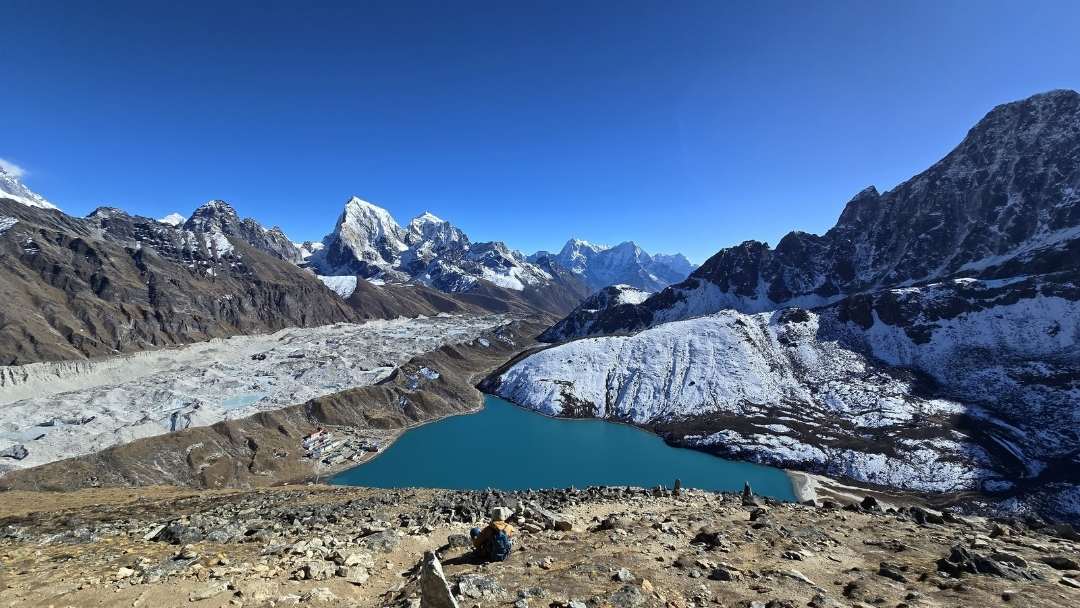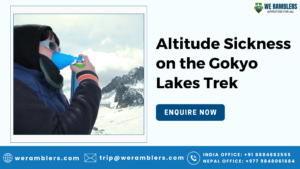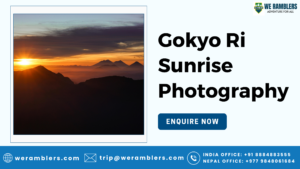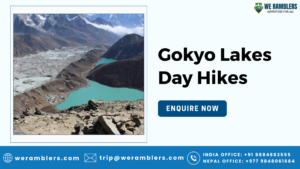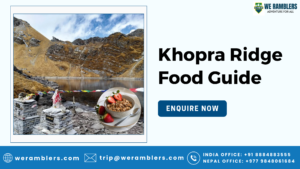Exploring the Majestic Gokyo Lakes in Nepal: A Comprehensive Guide
Nepal is a land of spiritual significance, thrilling adventures, and breathtaking natural beauty. Among its many majestic destinations, Gokyo Lakes stands out as one of the most stunning places to visit. The pristine blue and green waters of these lakes form one of Nepal’s most iconic landscapes. Situated at an altitude of nearly 5,000 meters, they comprise the highest freshwater lake system in the world. For those who want to trek in the Everest region while experiencing diverse scenery and avoiding prolonged stays at extreme altitudes, the Gokyo Lakes trek is an ideal choice.
Gokyo Lakes Location and Overview
Nestled in the Sagarmatha Zone of northeastern Nepal, the Gokyo Lakes Nepal reside within the Khumjung Village Development Committee of Solukhumbu District. The settlement of Gokyo lies adjacent to the central water body—Gokyo Cho (also known as Dudh Pokhari), which covers 42.9 hectares (106 acres). The lake system includes six primary bodies of water: Gokyo Cho, Thonak Cho, Gyazumpa Cho, Tanjung Cho, Ngojumba Cho, and Kyajumba Cho, with Thonak Cho ranking as the largest. In addition, around 20 smaller high-altitude lakes embellish the valley, offering trekkers even more hidden gems. Consulting a detailed Gokyo lakes map proves invaluable for planning routes and exploring the region’s diverse features.
Gokyo Lakes Trek Statistics and Key Information
| About Gokyo Lakes & Gokyo Lake Trek | Details |
| Gokyo altitude (Gokyo Lake) | Approximately 5,000 meters above sea level |
| Number of Lakes in Gokyo Lakes Nepal | 6 primary lakes (plus 20+ additional smaller lakes) |
| Duration of Gokyo Lakes Trek | Typically, 10–14 days |
| Gokyo Lakes trek distance | Roughly 65 km one-way from Lukla via established routes |
| Kathmandu to Gokyo Lakes distance | Around 410 kilometers by road |
| Required Permits to visit Gokyo Lakes | TIMS, Khumbu, and Sagarmatha National Park permits |
Best Time to Visit Gokyo Lakes
Ideal Gokyo Lakes trekking periods occur in spring (March–May) and autumn (September–November). During these months, extended daylight, stable temperatures, and clear skies enhance the trekking experience. In spring, vibrant rhododendrons burst into bloom, while autumn offers crisp days and unobstructed mountain vistas. Although trekking during the monsoon or winter is feasible with proper guidance, these seasons demand heightened caution and preparation.
Getting to the Gokyo Lakes Trek
Several transportation options enable access to these high-altitude wonders:
By Flight
Air travel from Kathmandu to Lukla takes roughly 35 minutes. After landing, trekkers navigate through Monjo, Namche, Khumjung, Dole, and Machhermo to commence the Gokyo Lake Trek.
By Road
A land trip from Kathmandu to Jiri is an immersive experience. A return trip to the Gokyo Lakes can take 15 to 18 days from Jiri. Alternatively, you can reach Saleri/Phaplu by road (which takes 2 to 3 days) and then begin to hike to Gokyo Lakes and Gokyo Ri, which takes 12 to 14 days.
By Helicopter
If you don’t have enough time to walk for several days, a helicopter journey to Gokyo Lakes is a wonderful alternative. The helicopter can land at the third Gokyo lake for a spectacular view of the lake before flying over the other Gokyo lakes and the Ngozumpa glacier. The helicopter flight to Gokyo Lakes costs roughly USD 4500 from Kathmandu to Kathmandu. Alternatively, you can travel to Lukla and then take a helicopter to the Gokyo Lakes; the chopper journey is less expensive than in Kathmandu. A helicopter flight to Gokyo Lakes from Lukla to Lukla costs approximately USD 1800. The cost of a helicopter ride varies frequently; check the price before using the service.
A comprehensive Gokyo Lakes trek map from We Ramblers can help refine travel plans and reveal alternative routes, ensuring a smooth start to your adventure.
Gokyo Lakes Route Highlights
The journey along the Gokyo Lakes trek is laden with awe-inspiring highlights that captivate every traveler. One of the foremost highlights is the spiritual aura that permeates the region. The Gokyo Lake area is steeped in sacred traditions, drawing pilgrims and trekkers alike. Local communities celebrate numerous festivals here, and visitors often witness vibrant rituals that honor deities such as Lord Shiva, Vishnu, and the revered Nag Devata. As you traverse the rugged mountain trails, the interplay of ancient prayer flags, chortens, and mani walls imbues the trek with an almost mystical charm.
Nature enthusiasts revel in the surreal vistas offered by panoramic views of the Himalayas. The climb to Gokyo Ri stands out as a once-in-a-lifetime opportunity: at sunrise or sunset, the entire Everest range, including peaks like Cho Oyo and Gyachung Kang, is bathed in a golden glow. The crisp mountain air, combined with the tranquil beauty of the Gokyo Lakes trekking route, offers an emotional and meditative experience.
Cultural interactions are a cornerstone of this trek. Engaging with the local Sherpa community provides insights into centuries-old customs, warm hospitality, and traditional lifestyles. Each village along the route shares its own story, and local homestays often serve traditional meals, offering a taste of Nepal’s rich culinary heritage. This cultural immersion, coupled with breathtaking natural scenery, creates memories that last a lifetime.
For adventurers seeking a blend of spirituality, natural splendor, and cultural richness, the Gokyo Lakes trek Nepal is unrivaled. Whether you are meditating by the clear waters of Gokyo Cho or capturing photographs of ancient stupas under the high Gokyo Lakes trek altitude, every moment resonates with beauty and meaning. The trek is not merely a physical journey but a soul-stirring expedition into the heart of Nepal’s majestic highlands.
Attractions Near Gokyo Lakes
The region around Gokyo Lakes teems with attractions that appeal to both nature lovers and cultural enthusiasts. One of the major attractions is the roaring Dudh Koshi River. Emerging from the confluence of seven streams, the river carves through the Himalayan landscape, providing adrenaline-pumping kayaking experiences and stunning views of the surrounding peaks. For those fascinated by wildlife and natural habitats, a visit to some of the remotest parts of Sagarmatha National Park is a must. Spanning 1,148 km², this park harbors rare species like snow leopards, musk deer, and Himalayan black bears, alongside a rich variety of birdlife.
Namche Bazaar, another key attraction, serves as the bustling gateway to the high Himalayas. With its vibrant market atmosphere, local handicrafts, and panoramic views of mountains like Ama Dablam and Mount Everest, it offers trekkers a blend of modern amenities and traditional charm. The village of Khumjung too provides a glimpse into Tibetan culture, with ancient monasteries and local festivals that illuminate the region’s deep spiritual roots.
Additionally, Gokyo Village itself stands out for its unique setting at 4,750 meters above sea level. Here, visitors can experience local customs and marvel at the unspoiled beauty of the lakes from up close. Historic sites, small chapels, and traditional stone houses dot the area, offering insights into the daily lives of the indigenous people.
A detailed table of attractions helps highlight key facts:
| Gokyo Lake Route Attractions | Important Features | Distance from Gokyo Center |
| Tengboche Monastery | The biggest Monastery in Khumbu, great view of Everest, Lhotse, & Ama Dablam | 25 km |
| Namche Bazaar | Markets, cultural hubs, panoramic mountain views | Approximately 25 km from Gokyo Lake |
| Sagarmatha National Park | Diverse wildlife, extensive trekking trails, UNESCO World Heritage site | The Gokyo Lakes are situated in the park itself |
| Khumjung Village | Tibetan monasteries, ancient rituals, local handicrafts | 20 km |
| Phortse Village | Traditional homes, high-altitude living, great views | 18 km |
These attractions add layers of discovery to your expedition. As you wander from one site to another, every step ia blend of exhilarating adventure and cultural revelation. Whether exploring natural wonders or engaging with local traditions, the attractions near Gokyo Lakes provide endless inspiration and unforgettable memories.
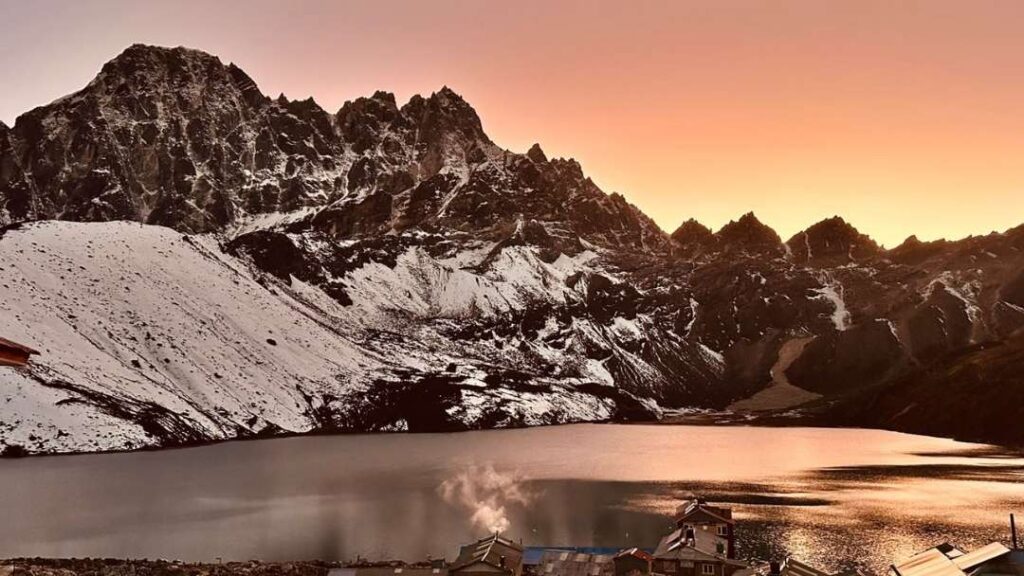
Gokyo Lakes Trek Difficulty and Accommodations
The Gokyo Lake trek difficulty is often rated as moderate, making it accessible to a wide range of adventurers. Despite the high altitudes and rugged terrain, the trek is designed with well-marked trails and a network of lodges and tea houses that ease navigation and provide essential rest stops. However, the physical challenge should not be underestimated. Proper acclimatization is crucial when traversing the high Gokyo Lakes trek altitude, and trekkers should prepare for steep ascents, variable weather conditions, and extended days of hiking.
The trek’s route combines long days of walking with gradual climbs, ensuring that you steadily build altitude while enjoying breathtaking views of the Himalayas. With careful planning and a moderate pace, even those new to high-altitude trekking can manage the journey. Still, a reasonable level of physical fitness and prior trekking experience are recommended.
Accommodations along the route range from basic tea houses to more comfortable lodges in Namche Bazaar and other villages. These lodgings are typically modest yet welcoming, providing warm meals, hot showers, and secure spaces for rest. The cost of lodging is quite reasonable compared to similar treks in the region, and many tea houses include meals as part of the package. A detailed breakdown of accommodation options is often available in the Gokyo Lakes trek itinerary, offering insight into prices, amenities, and location benefits.
For those who require additional comfort, some establishments in Namche Bazaar offer upgraded facilities with private rooms and modern amenities. The availability of Wi-Fi, charging ports, and reliable hot water can make the long days on the trail more bearable. However, during peak trekking seasons, booking in advance is essential to secure your preferred lodging. Moreover, some tea houses even provide cultural evenings where local music and dance performances add an enriching element to the stay.
In summary, while the trek presents moderate challenges due to the high Gokyo Lakes trek distance and altitude, the well-organized trail network and diverse accommodations ensure that trekkers can focus on enjoying the remarkable scenery. Adequate preparation, pacing, and proper rest are key to a safe and enjoyable adventure through the mesmerizing landscapes of Nepal.
Permits and Regulations for Gokyo Lakes Adventure
Securing the appropriate permits is an essential part of planning your journey on the Gokyo Lake Trek. To traverse the pristine landscapes of Nepal, trekkers must acquire several permits that ensure both safety and adherence to conservation efforts. These include the TIMS Permit, the Khumbu Permit, and the Sagarmatha National Park Permit. Each permit serves a specific purpose and must be obtained either through local travel agencies or at designated offices upon arrival.
TIMS (Trekking Information Management System) Permit:
This permit is mandatory for all trekking routes in Nepal. It helps the authorities maintain records of trekkers for safety and rescue purposes. The TIMS Permit can be secured via accredited local travel agencies or directly from offices in Kathmandu. The application process generally involves filling out a form, submitting a passport-sized photograph, and paying a nominal fee. The fee may vary based on the trek’s duration and the travel agency’s policies.
Khumbu Permit:
For those trekking in the Khumbu region, the Khumbu Permit is required once you enter areas near the Everest region. Typically, this permit is obtained in Lukla or Monjo after arriving in the region. It verifies that you are aware of the necessary safety measures and regulations in place. The permit fee is often included in a package if you arrange your trek through a reputable agency; however, independent trekkers should plan to purchase it at the local offices. This permit also acts as a record for environmental conservation, ensuring that the fragile ecosystem is monitored and protected.
Sagarmatha National Park Permit:
The Sagarmatha National Park, a UNESCO World Heritage site, mandates an entry permit for all visitors. This permit is available at the Monjo checkpoint or at the Bhrikuti Mandap Tourism Board office in Kathmandu. The Sagarmatha National Park Permit not only grants access to the park but also supports conservation efforts aimed at protecting endangered species and preserving the natural beauty of the region.
Additional regulations include guidelines on waste management, respecting local customs, and adhering to designated trekking paths. Detailed information regarding fees, validity periods, and additional conditions is typically provided at the point of application or through official websites and local tour operators. Many trekkers find it beneficial to consult a comprehensive Gokyo Lakes trek itinerary before departure, as this document often includes permit details, cost breakdowns, and step-by-step application instructions.
By following these permit procedures and regulations, you contribute to the sustainable management of the region’s delicate environment while ensuring a safe and organized trekking experience on the Gokyo Lakes Trek.
Essential Equipment and Preparation for the Gokyo Lakes trekking Journey
Before starting your expedition, proper preparation is crucial. Pack these essential things:
- Waterproof bags
- A robust down jacket
- Sunglasses
- Thermal layers
- Trekking shoes
- Gloves
- A skull cap
- Trekking poles
- Raincoat/Poncho
- Hat
- Reusable water bottles
- Water purification tablets
- And a well-stocked first-aid kit
These items help ensure comfort, safety, and enjoyment throughout your adventure on the Gokyo Lakes trek in Nepal.
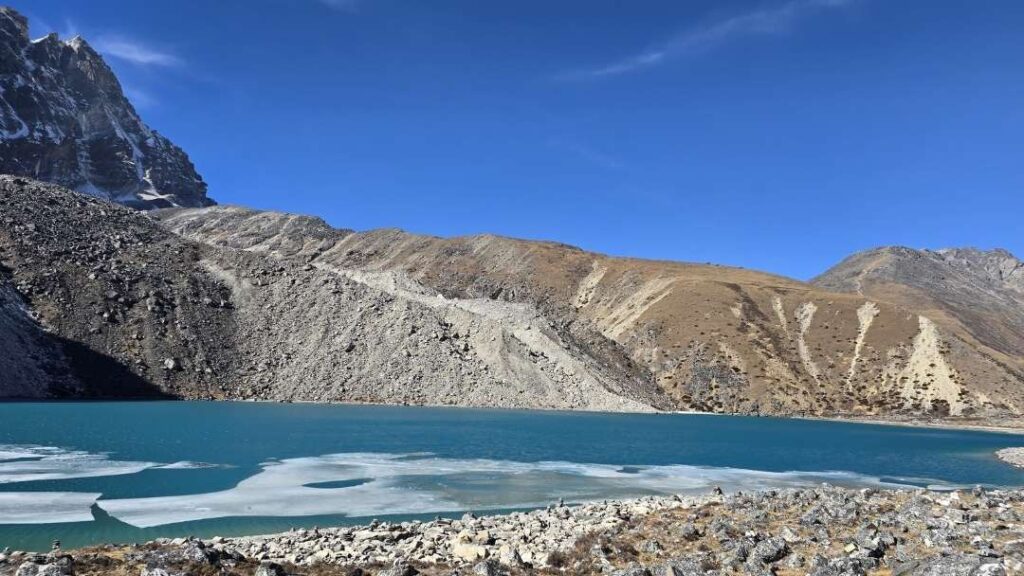
Frequently Asked Questions on Gokyo Lakes
Is the Gokyo Lake trek valuable?
Undoubtedly, the hike to Gokyo Lakes offers unparalleled 360-degree vistas of the Everest Range, with Gokyo Ri providing spectacular views at 5,380 meters.
What is the depth of the Gokyo Lakes?
Lake depths vary considerably, ranging between 4 to 80 meters, which adds unique charm and character to each water body.
Does Gokyo Ri lie near the lakes?
Indeed, Gokyo Ri is situated close to the third lake, requiring about a three-hour hike to reach its summit.
How are the views during Gokyo Lakes trekking?
Trekking reveals magnificent panoramas including Cho Oyo and Gyachung Kang. The vantage point at the fifth lake delivers a comprehensive view of Mount Everest, an experience unparalleled in the region.
Book Your Gokyo Lake Trek Package Today
At We Ramblers, we offer specially curated packages for the breathtaking Gokyo Lakes trek. Our experienced team will guide you through every step of your journey across Nepal’s majestic highlands. We offer comprehensive packages that include all necessary permits, comfortable accommodation, and expert-led tours ensuring a safe and unforgettable experience. We also offer packages for other popular treks, including the Everest Base Camp Trek, Annapurna Base Camp Trek, Three Passes Trek Everest High Passes Trek, and more. Whether you are a seasoned trekker or new to Himalayan adventures, our flexible packages meet every need. Contact us today to secure your spot and explore the natural wonders of Gokyo Lakes Nepal with confidence and ease right away.

